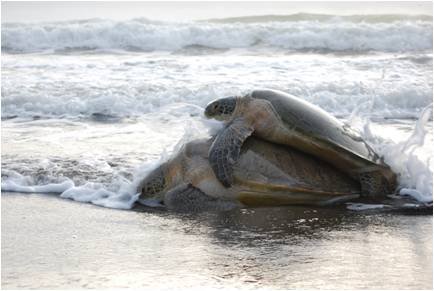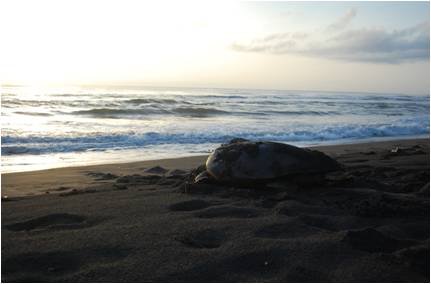By Alice Hawkes | Charitable Trust Team
Marine Turtle populations face a variety of pressures worldwide; including illegal poaching of nesting females and eggs, fisheries by-catch, loss of nesting habitat and pollution. Turtle numbers had been declining as a result of these pressures for decades – long before organizations began developing conservation programs across the range in attempt to reverse this slide and prevent the extirpation of local turtle populations. One such organization is the Sea Turtle Conservancy (STC), formerly the Caribbean Conservation Cooperation. The STC runs projects across the Caribbean which includes a monitoring program in Tortuguero National Park. The STC established its work here in 1959, and is the longest running marine turtle program in the world. This area also happens to host, depending on the source, the ‘largest’ nesting colony of green turtles Chelonia mydas across the globe (c.20,000 females), as well as small nesting populations of leather-backs Dermochelys coriacea, hawksbills Eretmochelys imbricata and the very occasional loggerhead Caretta caretta. Since the STC began their stewardship of the area, there has been a steady increase in the total number of green turtles.
Prior to 2010, the STC was restricted to surveying the 5 miles of beach along the north end of the park, directly in front of Tortuguero, on a daily and nightly basis. The rest of the 13 miles of beach could only be patrolled a few times a week, and was limited to only counting tracks as opposed to marking nesting turtles. This is where GVI comes in. Since setting up base here in 2010, we have been able to significantly increase the STC’s sampling effort and provide further protection to the vulnerable sea turtles. With our help the STC can now collect invaluable data in an area that was once out of reach; improving the accuracy of population estimates, the understanding of factors affecting hatching success and also reducing the rates of poaching that were likely to have been at a very high level.
So what do we do? Turtle season is broken up into two segments: leather-back season (March-June) and green season (June-November). During leather-back season we patrol a 4 mile stretch of beach where as in green this is reduced to a 3 mile stretch due to the abundance of turtles. During our night patrols we mark the nests of turtles we find and tag and measure them. On our daily nest checks we ‘watch over’ as it were, the nests we have marked, as well as count the number of nests we did not observe the previous night. Nests are also excavated after their incubation period to determine how many of the eggs developed into hatchlings. All this data is invaluable for marine turtle conservation, and when you step back and look at the figures, GVI is really doing its’ part. Since the beginning of 2010, we have collectively:
The existence of most marine turtle species hangs on a knife’s edge. At the forefront of preventing this demise are organisations like the STC whose collection of accurate and reliable data will drive area management plans in the direction of marine turtle conservation. These organizations need support both financially and with volunteers. We are providing such support and in every sense, act as the STC’s third arm in Tortuguero National Park. We have significantly increased their monitoring capabilities and are helping to protect a section they were previously unable to reach. Although for conservation measures to succeed turtles require protection across their ranges, every contribution makes a difference. Together with the STC and members of ACTo (Area Conservacion de Tortuguero) we will strive to provide protection to the turtles that use Tortuguero for the breeding and nesting stages of their life cycles. At the moment, poaching levels are still unsustainable and there is not enough being done; primarily due to the lack of resources provided to the park rangers. Rangers are unable to respond to illegal harvesting due to lack of man power or even the lack of fuel. In response, the STC are in the process of organizing a protest in Tortuguero with the aim of highlighting the plight of this precious resource to the rest of the nation. We are in full support of this and with any luck, poaching rates will continue to decrease!
Project reports on GlobalGiving are posted directly to globalgiving.org by Project Leaders as they are completed, generally every 3-4 months. To protect the integrity of these documents, GlobalGiving does not alter them; therefore you may find some language or formatting issues.
If you donate to this project or have donated to this project, you can receive an email when this project posts a report. You can also subscribe for reports without donating.
Support this important cause by creating a personalized fundraising page.
Start a Fundraiser
